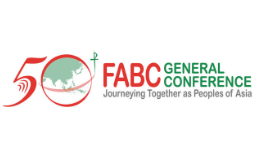Pope Francis’ revolution in tradition
One year on from the election of Pope Francis as successor to the Apostle Peter, we are becoming increasingly aware that he is guiding the Church towards a revolution, fought not by the sword but by personal witness, without throwing away the past, but by helping authentic tradition to flourish once again.
Mar 21, 2014
By Bernardo Cervellera, AsiaNews
One year on from the election of Pope Francis as successor to the Apostle Peter, we are becoming increasingly aware that he is guiding the Church towards a revolution, fought not by the sword but by personal witness, without throwing away the past, but by helping authentic tradition to flourish once again.
This has been evident right from the outset, that first evening of March 13, when presenting himself to the world from the loggia
of St Pete’s Basilica he asked us to pray together, and silence immediately descended on the packed square, which previously had been full of restless murmurs. Instead of proclaiming programsme, he called for silence to listen to God’s programme (the one that “always precedes us”).
The Bishop of Rome asked for the prayers of the faithful. Some naive television commentators saw this gesture as a sign that he would dispose of hierarchical clericalism. Indeed, with his silent bow, the Pope lowered himself: to show that he is not a monarch, but a person with a mandate, someone who takes very seriously what one billion Catholics do every day with the rosary: “We pray an Our Father, Hail Mary, Glory Be for the intentions of the supreme Pontiff.” The most traditional element was expressed in unison with the single most revolutionary, most progressive element.
The uniting of these two elements, the traditional and the progressive, appears to be characteristic of Francis. When he speaks of the poor, the Church of the poor, some see this as a sign of a redemption of the old liberation theology, the Church that “finally” take sides in society and fights ... As long as the poor — as we see in Evangelii Gaudium (EG) — are not deluded or manipulated by messianic politicians, or led astray by deaf and abstract intellectuals, but first of all nourished with the Word of God and the Eucharist!
From this point of view, Francis is the ripest fruit of the Second Vatican Council, and especially of a “sound” reading of the Council. In these intervening decades — as was masterfully explained by Benedict XVI — the Church has been divided between
a hermeneutic of rupture meaning that the Council was a watershed between the past and present-future; and the hermeneutic
of continuity meant the development of the life of faith in unity with the past, albeit a past that is re-read and re-applied to the needs of modern man.
In a strange short-sightedness, the “rupture” was attributed exclusively to progressive Catholicism that willingly forgot the sacraments in its desire to implement the class struggle; it preferred orthopraxis to orthodoxy. However, what went unnoticed among the conservative Catholicism was that a “rupture” is also present in the repetition of stale tradition, in the affirmation of orthodoxy without any concern for orthopraxis, in a rigid liturgy that fails to communicate the faith, in pounding on about laws and precepts from the pulpit, while despising the world and the man that Christ came to save.
Fifty years after the Council, Pope Francis goes beyond these two ruptures, the right wing and the left wing, and reaffirms the Council and the reading thereof as an exegesis of continuity. This is why his every action is both traditional and modern; he spends time in silent prayer before the Blessed Sacrament, and in a moving and loving silence draws close to the long lines of the ill and sick who each Wednesday fill the front rows at the general audience, worshipping both the “body” and the “flesh of Christ”.
This overcoming of rupture is seen in his ability to reconcile his own priesthood and that of all of the faithful (instead of leaning
towards one or the other) in his continuous enhancement of the role of the laity without diminishing that of priests; living as the bishop of Rome, enhancing that of the Bishops’ Conferences; his evoking universal charity: towards Syria, Ukraine, Central Africa ... the other Churches and Christian communities around the world, members of other religions.
If there is a simple way to define the Francis’ revolution, it is in the word “movement”: his is a Church that moves, comes out, willing to travel a beaten path and even to strip itself bare to render the truth and the sweetness of the Saviour available to everyone.







Total Comments:0